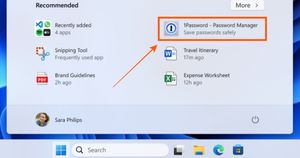
Having a good understanding of traffic signs is equally important as it is to know how to drive. These traffic signs allow the traffic to move in the correct manner and direction, avoiding unnecessary traffic and accidents. One of the first few things a new driver must learn is the traffic signs and how they should be looked at while keeping a keen watch on the road. Traffic signs are nothing but signs and symbols that help in the easy regulation of traffic. There is an increased number of road accidents in India, which is increasing daily. It is believed that traffic signs can majorly avoid mishaps if a driver follows them carefully and diligently. There is a list of several traffic signs categorized into a few categories:
- Mandatory traffic signs
- Cautionary traffic signs
- Informatory traffic signs
These signs help a driver tell them where and where they should not park, the speed limit that should be followed, whether a U-turn is allowed or prohibited, and many on-the-road warnings and signs that are necessary for a driver to know about. Below is a list of some of these several traffic signs followed in India. Continue reading to find out more about it.
What Are the Traffic Signs?
Traffic signs are small informational signs and symbols that play a key role in regulating traffic and ensuring that drivers and pedestrians are provided with a safe road environment. These signs are an easy means of communicating with road users to familiarize them with the basic traffic rules and regulations, provide warnings, and provide information about the conditions of roads and locations and nearby amenities. These signs help in maintaining road discipline, gives instructions about routes and roads, inform about the entry and exit points, availability of parking and no parking conditions, number of lanes, and also let the driver know where they could expect curves, U-turns, potholes, and many other things.
Importance of Traffic Signs in Daily Life
Traffic signs play an important and indispensable role in our daily lives. The safety of motorists and pedestrians depends on these signs. Traffic signs are important because they make sure that the traffic regulation is smooth and prevents unnecessary overcrowding, it prevents potential mishaps from happening, help the driver gain some valuable information about the road ahead, and it also aims at restricting motorist offenses. It makes sure that smooth navigation is maintained. Drivers and pedestrians need to remember some of the most important traffic signs.
Also Read: How to Set up an EV Charging Station in India: Know The Types, Costs, Policies And More
Different Types of Traffic Signs in India
There are distinct types of traffic signs in India. These signs are divided into the three most basic categories, including mandatory traffic signs, cautionary traffic signs, and informatory traffic signs. These signs hold grave importance in the daily life of motorists and pedestrians. If given a brief description of the three categories of signs mentioned, it is said that the mandatory traffic signs are the ones that are especially important to be followed and should not be avoided under any circumstances. Whereas the Cautionary Traffic signs, as suggested by the name, give a warning and caution the drivers about possible obstacles that could be witnessed ahead on the road last but not least, Informatory traffic signs provide the driver with some information needed while driving like about the close by facilities.
Mandatory Traffic Signs
As much as it is so important to follow all the traffic signs in our country. It is essential to follow a few of the particularly important, at least unavoidable, signs mentioned that everyone should follow in India. The Road Transport Act of India has established certain rules for people to follow traffic signs. The offender is liable for profound consequences if these obligatory rules and signs are avoided and not followed. These signs ensure that traffic functions smoothly and that motorists and pedestrians both feel safe. It also ensures that the vehicles on the road adhere to the given speed limit and about the parking and no parking directions that must be followed. Below are some mandatory traffic signs and a table describing what each sign signifies.
| Traffic Signs | Meaning |
| Stop | Drivers and pedestrians need to stop immediately after seeing this sign. |
| Straight Prohibitor No Entry | Indicates restricted area. |
| Give Way | Indicates the traffic to give way to the other fellow traffic on the right. |
| Horn Prohibited | Signifies that honking is restricted in areas. |
| Pedestrian Prohibited | Indicates the place marked with this sign is restricted for walking. |
| Speed Limited | The mentioned speed limit is mandatory in these areas. |
| No Parking | This sign signifies that parking is prohibited in the area marked with this sign. |
| Right-Hand Curve | Caution the driver about the right-hand curve. |
| No Stopping or Standing | It signifies that no vehicle or person should stand or stop at the locations marked with this sign. |
| Right Hair Pin Bend | Cautions about a sharp right turn ahead |
| Narrow Bridge | Indicates the driver about an approaching narrow bridge on the road ahead. |
| Left-Hand Curve | Caution the driver about the left-hand curve ahead on the road. |
| School Ahead | Caution the driver about a school near the area marked with the sign. |
| Left Hair Pin Bend | Cautions about a sharp left turn ahead on the road. |
| Narrow Road Ahead | Caution the driver about a narrow road ahead. |
| Barrier Ahead | Indicate to the driver that there is a barrier in the road ahead. |
| Pedestrian Crossing | This sign signifies that pedestrians should cross the road. |
| Round About | Indicates the driver about a circular intersection approaching |
| Dangerous Dip | Caution the driver that there is a sharp dip nearby ahead |
| Hump or Rough | Cautions the driver about an approaching hump on the road. |
Cautionary Traffic Signs
These signs are important and warn the driver and pedestrians about the approaching obstacles and threats on the road ahead. It also signifies the driver to slow down and pay strict attention to the approaching situation of the road ahead. More than 40 traffic signs are incorporated into the list of cautionary signs. These signs are relatively easy to recognize and are made up of simple graphics. Below are some cautionary traffic signs and a table describing what each sign signifies.
| Traffic Signs | Meaning |
| Right-Hand Curve | Caution the driver about the right-hand curve approaching |
| Right Hair Pin Bend | Cautions about a sharp right turn ahead on the road. |
| Left-Hand Curve | Caution the driver about a left-hand curve ahead on the road. |
| Right Reverse Bend | Caution the driver about a zigzag turn to the right. |
| Left Hair Pin Bend | Cautions about a sharp left turn ahead on the road. |
| Steep Descent | Indicates that there is a steep descending downwards nearby ahead on the road. |
| Left Reverse Bend | Caution the driver about a zigzag turn to the left. |
| Steep Ascent | Indicates that there is a steep rising upwards nearby on the road. |
| Narrow Road Ahead | Indicates to the driver that the road ahead merges into a narrow road. |
| Road Wideness Ahead | Indicates to the driver that the road ahead widens. |
| Cycle Crossing | Indicates that the road is meant for riding a bicycle. |
| Slippery Road | Caution to the driver that gravel or loose earth keeps falling on the road. |
| Men At Work | Indicates that labourers are working on the road ahead. |
| Pedestrian Crossing | This sign indicates that pedestrians should cross the road. |
| School Ahead | Caution the driver about a school nearby. |
| Falling Rocks | Caution the drivers that the road ahead is prone to falling rocks. |
| Cattle | Indicates the possibility of cattle on the road nearby. |
| Narrow Bridge | Indicates the driver about a narrow bridge on the road ahead. |
| Ferry | Indicates the presence of ferry service ahead on the road. |
Informatory Traffic Signs
The informatory traffic signs tell the driver about different facilities provided on the road they are on, including hospitals, petrol pumps, public toilets, restaurants, hotels, and more. Back in the days when Google Maps was not available and when drivers used to travel around places navigating their way through unknown areas. Things were not as simple as they are today but the only thing that provided help to the public were these informatory signs. It is the quickest and easiest way to gather information to date. In the remote areas where the internet is not provided these signs come into play. Below are some informatory traffic signs and a table describing what each sign signifies.
| Traffic Signs | Meaning |
| Public Telephone | Signifies that a public telephone is present nearby. |
| First Aid Post | Indicates the presence of a first aid facility nearby. |
| Eating Place | Indicates the presence of an eating place nearby like restaurants, cafes, etc. |
| Hospital | Indicates that a hospital is present in a nearby location. |
| Petrol Pump | Indicates that a petrol pump is present in the nearby location. |
| Resting Place | Indicates the presence of a resting place. |
| Light Refreshment | Indicates the presence of a light refreshment facility nearby. |
| No Thorough Side Road | This indicates that a thorough side road is not available on the main road. |
| No Thorough Road | Indicates the an exit is not available on the road. |
| Parking Lot Scooter and Motorcycle | Indicates the parking lot available for scooters and motorcycles. |
| Park This Side | Shows the area where the vehicles could be parked. |
| Parking Lot Cars | Indicates the parking lot available for cars. |
| Parking Lot Cycle | Indicates the parking lot available for bicycles |
FAQs
1) Which traffic signs are most important?
The most important traffic signs that should be unavoidable at any cost are
- Speed Limit Signs: Signifies the speed limit and lets the driver know about the mentioned speed limit mandatory for the area marked with this sign.
- Stop Signs: Drivers and pedestrians need to stop immediately after seeing this sign
- Yield Signs: These signify that the drivers and other road users should give the right way to other traffic.
- Pedestrian Crossing Signs: Let pedestrians know whether they can walk safely across a road or a street.
- Construction Signs: Informs the users about the approaching construction sites
2) What are the 3 most important Colors of road signs?
The three most important colors of road signs are white, yellow, and green.
3) What Are the Functions of Traffic Signs in India?
The traffic signs in India aim to ensure that traffic is regulated in a smooth manner. These are the best sources of regulating traffic and ensuring the safety of both the drivers and pedestrians. An easy mode of communication is established between road users and drivers. These signs aim at providing basic road discipline and instructing the local public about the routes, speed limit, approaching danger, and many more. Given the increasing rate of road accidents in India, it is important for the local public to follow these traffic signs and rules to ensure that mishaps could be avoided and that the roads can function in an efficient manner.











